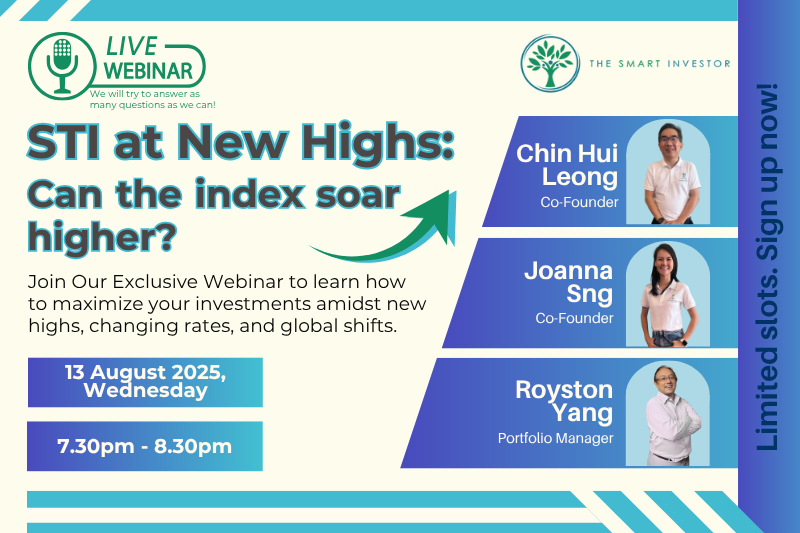By now, you’ve likely come across countless articles emphasising the importance of investing to keep up with inflation.
But investing isn’t just about protecting your money from inflation — it’s also a way to grow your wealth.
The question isn’t whether you should invest — that was never in doubt.
The real question is how to adjust your portfolio as you move through different stages of life.
Keep in mind, your investment portfolio shouldn’t stay the same over time.
As you age, your financial situation and risk tolerance will change.
This life progression means the portfolio you set up when you were younger might not be suitable as you enter your retirement years.
So, how should you adjust your portfolio’s allocation? Are there any tried-and-true guidelines to follow?
A simple rule of thumb
Rules of thumb can be incredibly helpful when it comes to investing.
They simplify the asset allocation process and make it easy to grasp.
One popular rule is the “100 minus rule,” which helps you figure out how much of your portfolio should be in stocks versus bonds.
Here’s how it works: subtract your age from 100 to determine the percentage of your portfolio that should be invested in equities.
For example, if you’re 20 years old, you should have 80% of your portfolio in stocks (100 minus 20) and 20% in bonds.
By the time you’re 70, the rule suggests your equity allocation should drop to 30%, with the remaining 70% in bonds.
While the “100 minus rule” is a useful starting point, it has its limitations.
The ratio oversimplifies things and doesn’t take into account your unique circumstances.
Plus, it doesn’t give any guidance on what types of stocks you should hold at different stages of life.
To better understand how to adjust your portfolio, let’s look at how you can build a sample stock portfolio for three key life stages: your 20s to 30s, 40s to 50s, and 60s and beyond.
20s to 30s: A long runway for capital appreciation
Your investment journey should ideally begin in your 20s, right after you graduate and start your career.
As you earn and build savings, you’ll have the opportunity to park some of that money in the stock market.
With decades of investment potential ahead of you, it’s a great time to take a more aggressive approach and focus on growth stocks that offer strong capital appreciation.
At this stage, dividend-paying stocks can take a backseat.
Your primary goal is to grow your earnings through your work and your investments.
Consider putting your capital into high-growth stocks from markets like Singapore, the US, or Hong Kong — companies that have the potential to expand over many years, if not decades.
Diversify your portfolio across sectors like technology, cybersecurity, and e-commerce for even more growth potential.
In the US, tech giants like Microsoft (NASDAQ: MSFT), Meta Platforms (NASDAQ: META), and Apple (NASDAQ: AAPL) are candidates to consider.
Over in Hong Kong, blue-chip tech companies like Tencent (SGX: HTCD) and Alibaba (SGX: HBBD) are popular choices.
In the cybersecurity space, look at leaders like Crowdstrike (NASDAQ: CRWD), Zscaler (NASDAQ: ZS), and identity management firm Okta (NASDAQ: OKTA).
For e-commerce, there’s Amazon (NASDAQ: AMZN), MercadoLibre (NASDAQ: MELI), as well as smaller players like Coupang (NYSE: CPNG) and Etsy (NASDAQ: ETSY).
Singapore also boasts growth stocks such as iFAST Corporation (SGX: AIY), a financial technology company that is rapidly growing both its profits and assets under administration.
These are just a few examples of growth stocks that can help you achieve capital appreciation over time.
However, keep in mind that growth stocks often come with higher volatility and require more attention.
The key is to focus on the fundamentals of the business and stick to your strategy, while keeping emotions in check.
These types of stocks will serve you well until you reach the next stage of your financial journey.
40s to 50s: Attaining a balanced portfolio
As you climb the corporate ladder and achieve greater career success, you’ll likely find yourself with less time to actively manage your investments.
By the time you reach your 40s and 50s, you may have a family, a mortgage and other loans to consider, which means your financial responsibilities are expanding.
At this stage, it’s important to shift your portfolio toward a more balanced mix of growth and income.
You might want to direct some of your capital gains and cash into dividend-paying stocks, which can provide a steady stream of passive income.
This passive income can help supplement your salary and ease the burden of rising living costs, giving you extra financial flexibility.
As you move through these years, consider building a well-rounded portfolio that includes both growth stocks and dividend stocks, with an increasing focus on the latter as you get older.
A great place to look for solid dividend stocks is the REIT sector.
REITs are required to distribute at least 90% of their earnings, making them reliable income generators for your portfolio.
Blue-chip REITs like CapitaLand Integrated Commercial Trust (SGX: C38U) and Mapletree Industrial Trust (SGX: ME8U) are good candidates for consistent dividends.
You might also want to consider investing in US “dividend kings” — companies that have raised their dividends for 50 or more consecutive years.
PepsiCo (NASDAQ: PEP), Procter & Gamble (NYSE: PG), and Kimberly-Clark (NYSE: KMB) are prime examples of dividend kings that provide stability and long-term income.
Just keep in mind that US stock dividends are subject to a 30% withholding tax, meaning you’ll receive only 70% of the declared dividend.
With this strategy, you can build a more balanced portfolio that not only offers growth but also consistent income as you navigate this life stage.
60s and above: Focus on passive income
As you approach your golden years, it’s time to shift your focus toward dividend stocks.
At this stage, it’s not ideal to keep too much of your money in growth stocks. You may need to tap into your investments for medical expenses or other unexpected costs.
If the market takes a downturn, you could be forced to sell at a loss to raise cash, which is something you want to avoid.
Instead, your priority should be building a reliable stream of passive income that can sustain you through various market conditions.
One way to do this is by increasing your allocation to REITs, which provide consistent income. You can also consider adding stocks with dependable and predictable dividends such as Haw Par Corporation (SGX: H02).
This approach will help ensure a steady flow of income as you enter retirement, giving you peace of mind no matter what the market does.
Get Smart: Tweak according to personal preference
The blueprint above offers a simple way to adjust your investment portfolio based on different life stages.
Of course, everyone’s financial situation is unique, so feel free to tweak this approach to fit your personal goals and preferences.
The key takeaway, however, remains the same: start with a higher proportion of growth stocks when you’re younger, and gradually shift toward more dividend-paying stocks as you age.
With this strategy in mind, you can confidently build and grow your portfolio, setting yourself up for a comfortable retirement.
Don’t let market uncertainty hijack your financial dreams. While headlines scream gloom, 5 Singapore companies have been quietly building wealth and paying reliable dividends. You’re probably overlooking them. Discover these resilient giants and their secrets to sustained income, even through global storms. Click here to download your free report now and secure your financial future!
Follow us on Facebook, Instagram and Telegram for the latest investing news and analyses!
An earlier version of this article appeared in The Business Times.
Disclosure: Royston Yang owns shares of Apple, Meta Platforms, Mapletree Industrial Trust, and iFAST Corporation.






